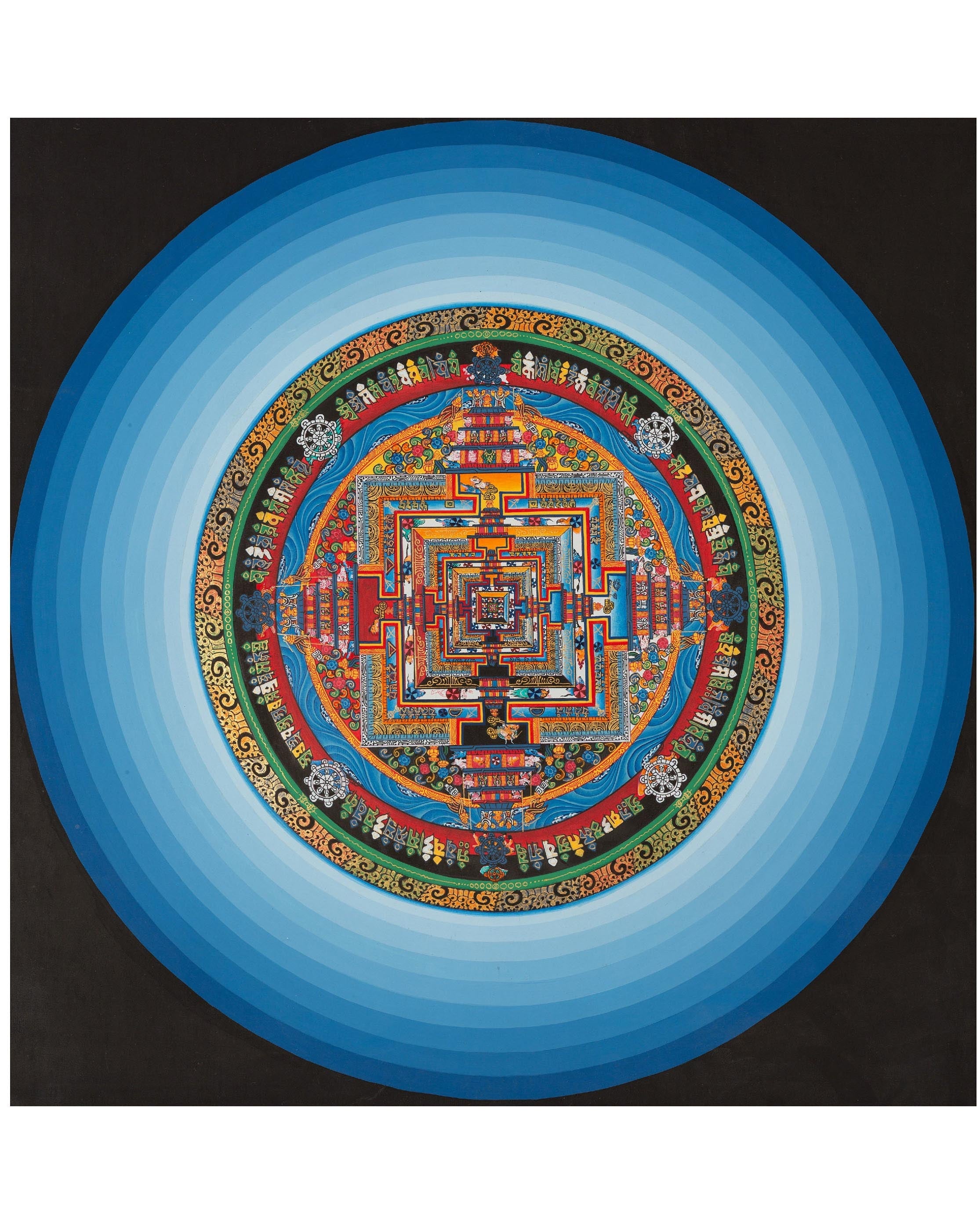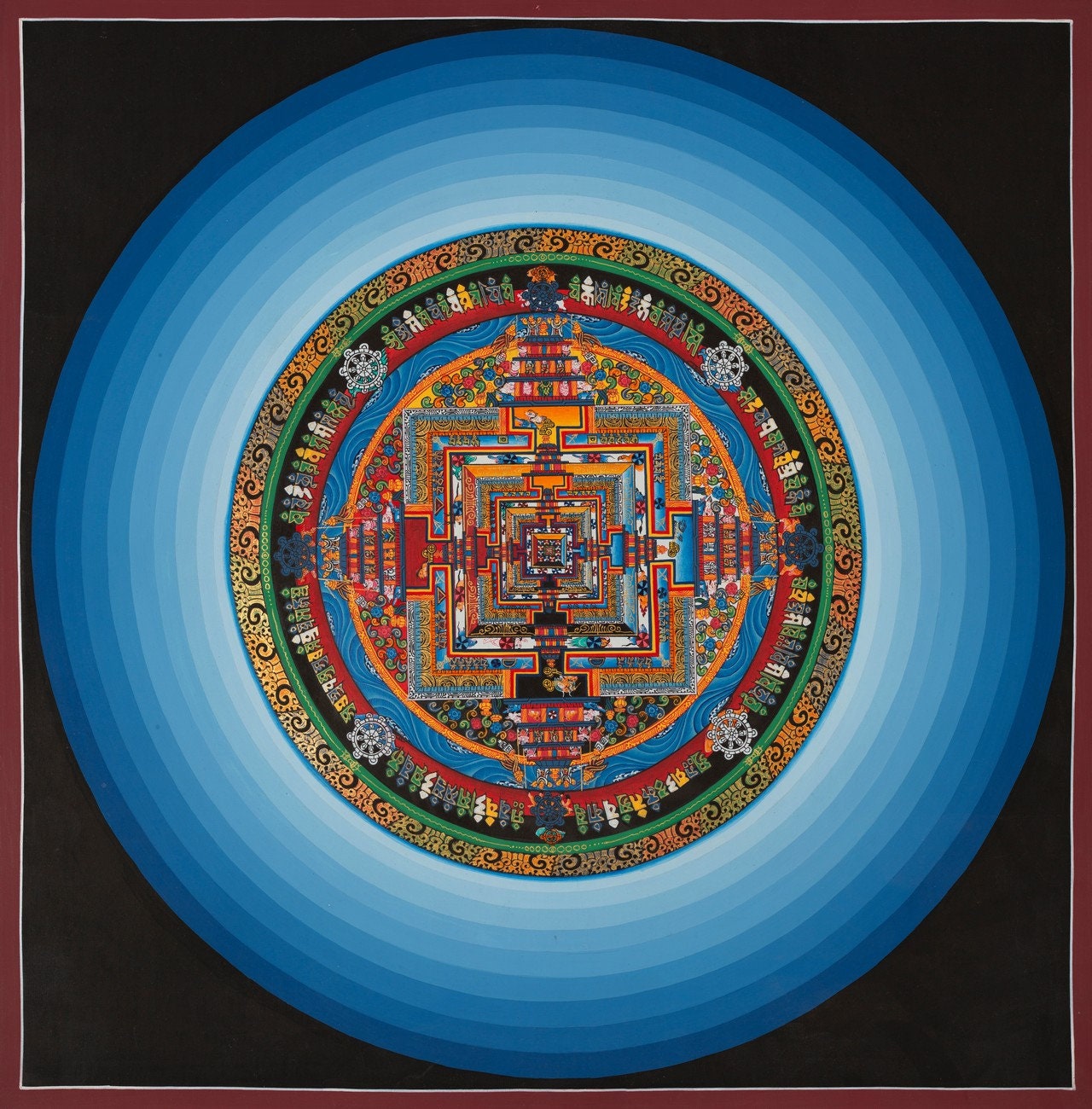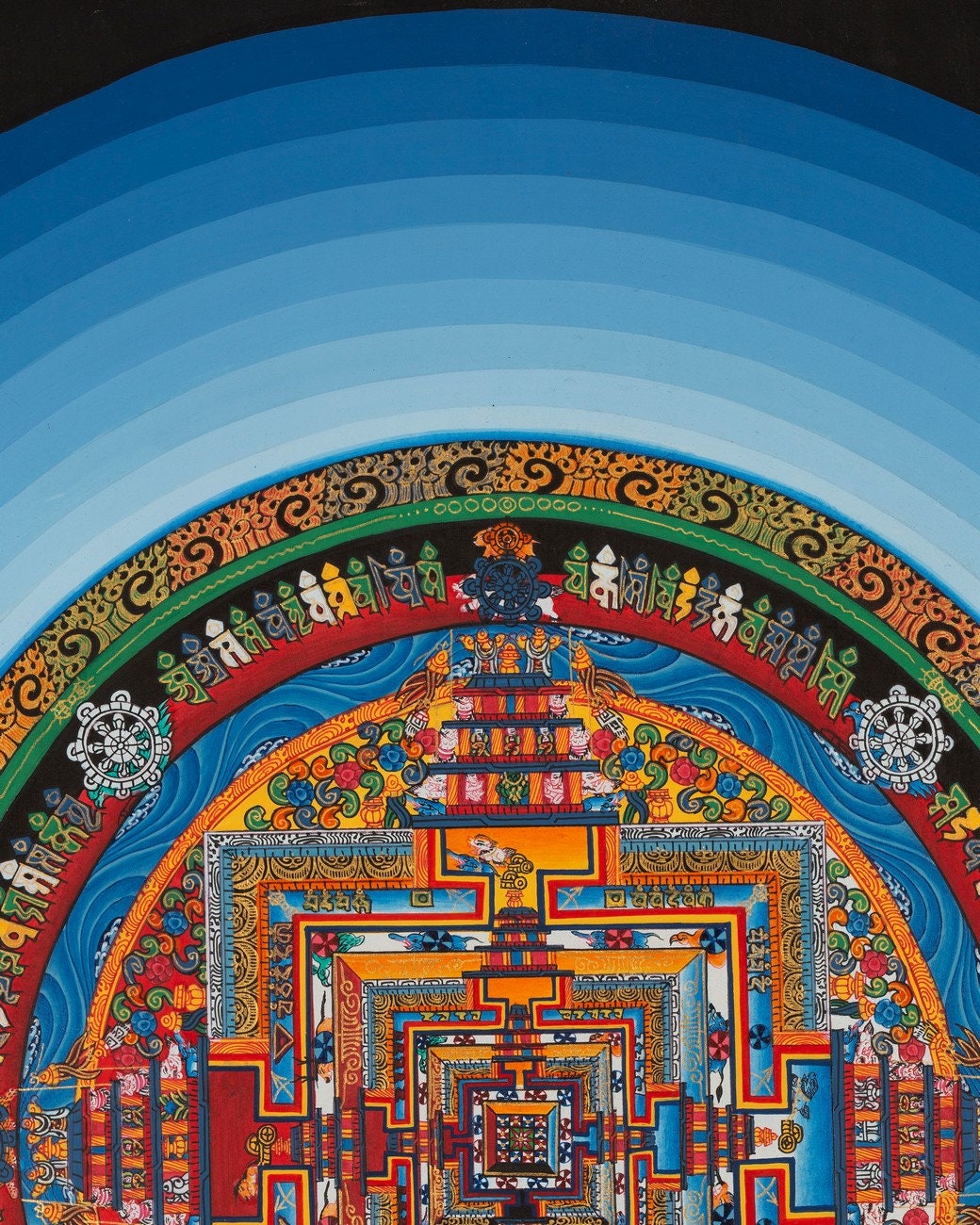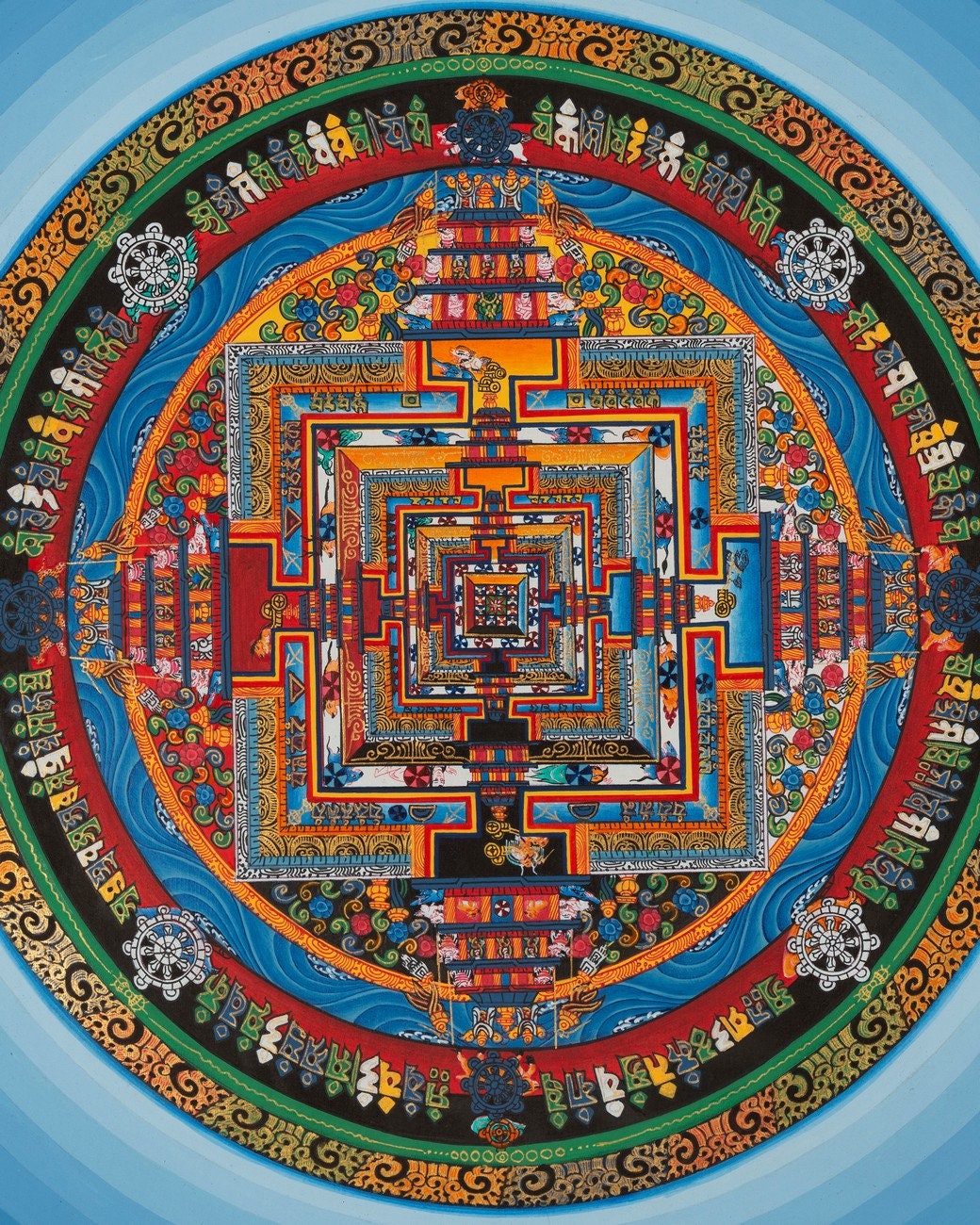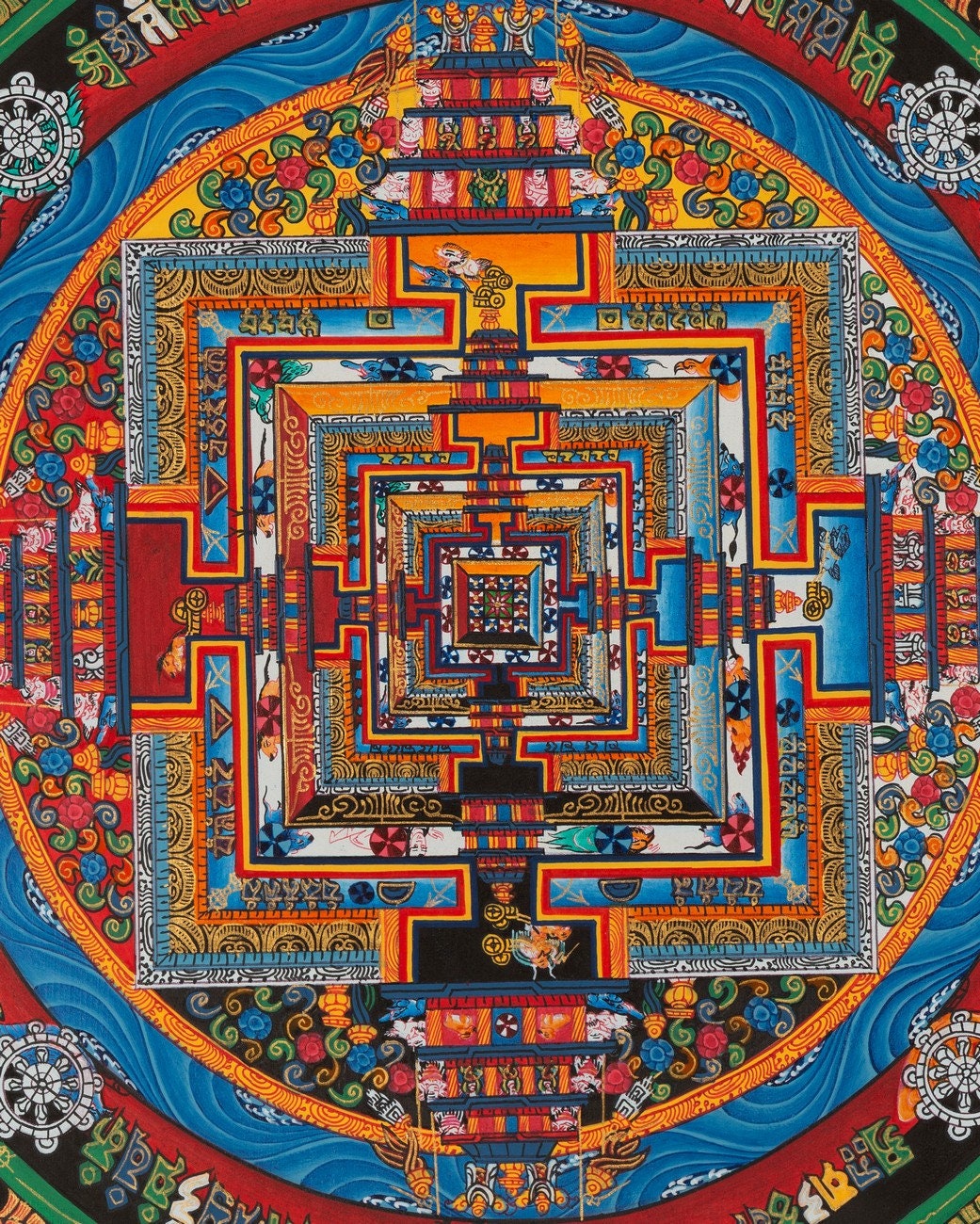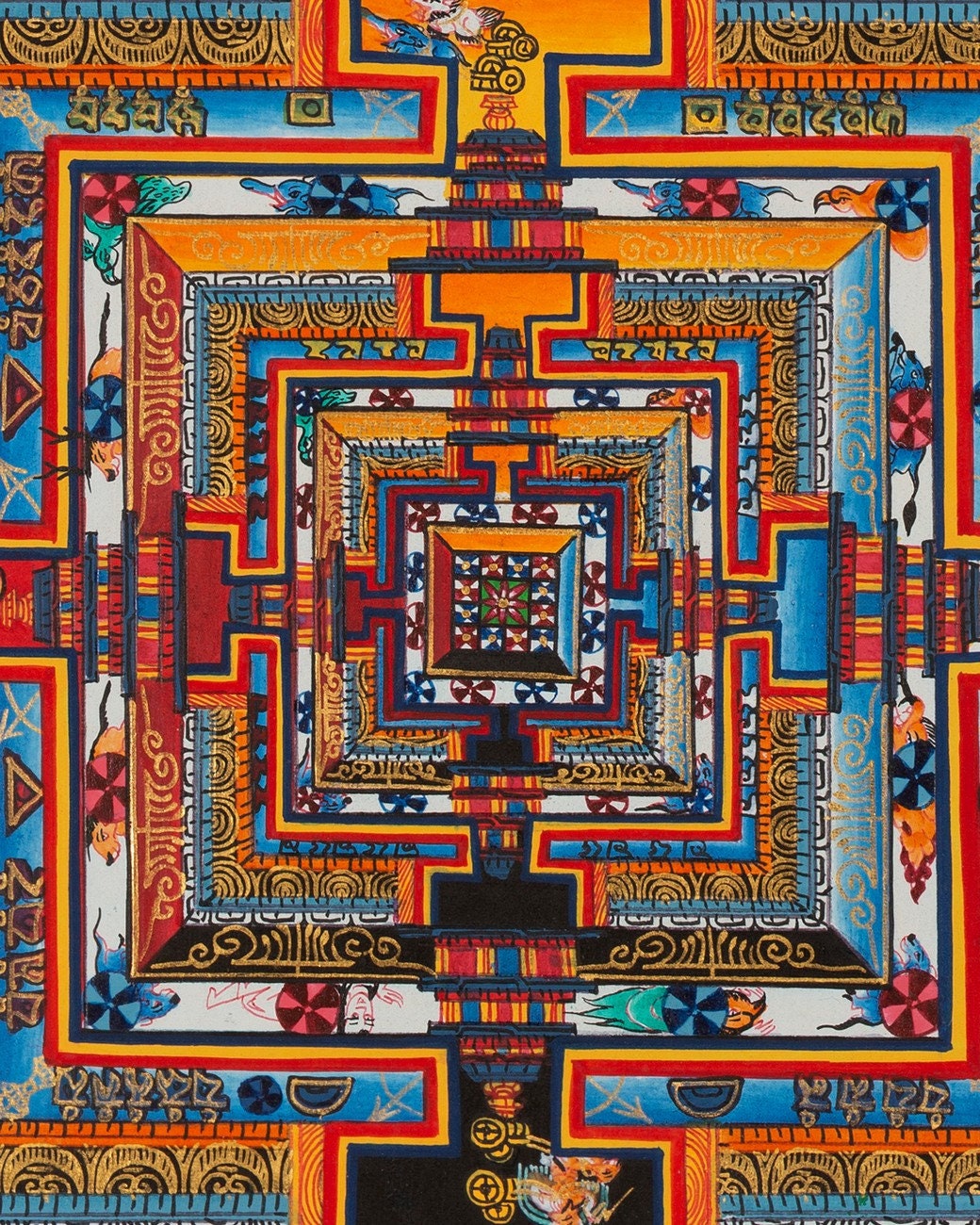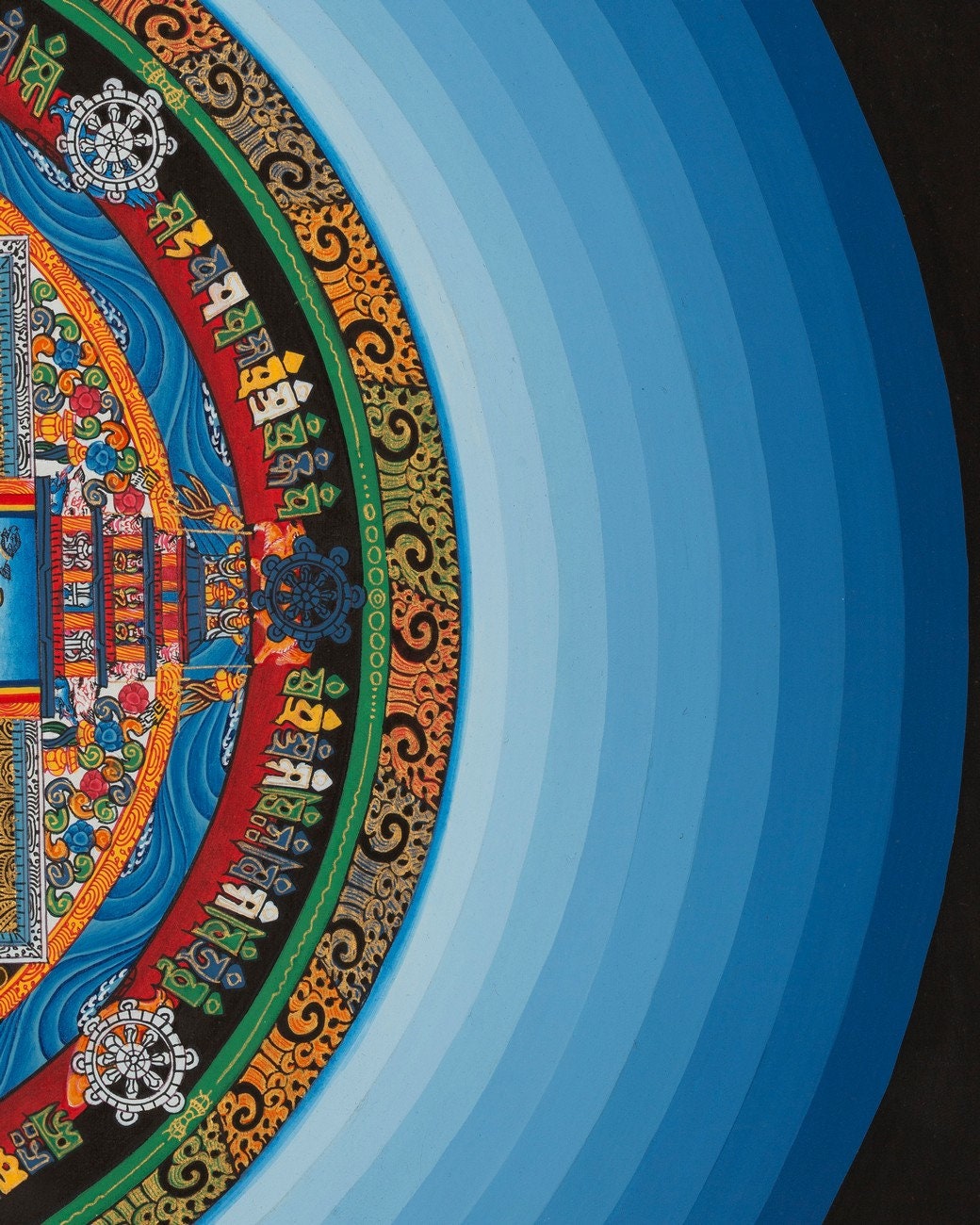Description
Quality Kalachakra Mandala
About Our Thangka
Material: Pure 24 Carat Gold,Gouache and acrylic colors on Cotton Canvas
Introduction To Quality Kalachakra Mandala
The was asked by King Chandrabhadra of Shambhala to teach the Kalachakra Tantra.The Buddha manifested himself in the form of the Kalachakra meditational deity and gave the full teachings and initiation of this tantra.The kalachakra teaching was then transmitted through a lineage of seven kings and 25 propagators.
Kalachakra mandala is the “Palace of Purity”with more than seven hundred deities residing inside ,represented by various signs and symbols .The entrances of the palace nearest to the centre are said to be cittacakra(mind-wheels),and the middle entrances are said to be vakcakra(voice-wheels).Outside the gates of vakcakra are figures of various animals,including a corpse,and marigold-like lotus flower.They include a deer,buffalo,ram peacock,elephant,mongoose ,bull,makara,mouse,and the Garuda.They are the vehicles of various divinities of the Hindu pantheon.
The outermost gates belong to the third circle called kayacakra(body-wheels).There are four gates and four chariots one in each gate.You can see boars drawing a chariot at the eastern gate,horses drawing the chariot at the southern gate,elephants at the western gate and lions drawing the chariot at the northern gate.
Kalachakra Mandala is one of the most complicated forms of Tibetan mandalas which is used as a device for meditation and which is worshipped for the betterment of all the sentient beings.It also represents the cosmos system which consists of the five major elements of life. Namely – Fire , Earth , Water , Air and Space .
------------------------------------------------------------------
Size: 15"/38 cm (width) x 15"/38 cm (height)
Materials: Cotton Canvas, Acrylic Colors, Genuine 24K Gold
------------------------------------------------------------------
THIS THANGKA IS HAND-PAINTED IN THE TRADITIONAL STYLE AND THE QUALITY IS HIGH
What is the significance Power duty of Samantabhadra?
- To request the Buddhas to remain in the world.
- To follow the teaching of the Buddhas at all times.
- To accommodate and benefit all living beings.
- To transfer all merits and virtues to benefit all beings.

